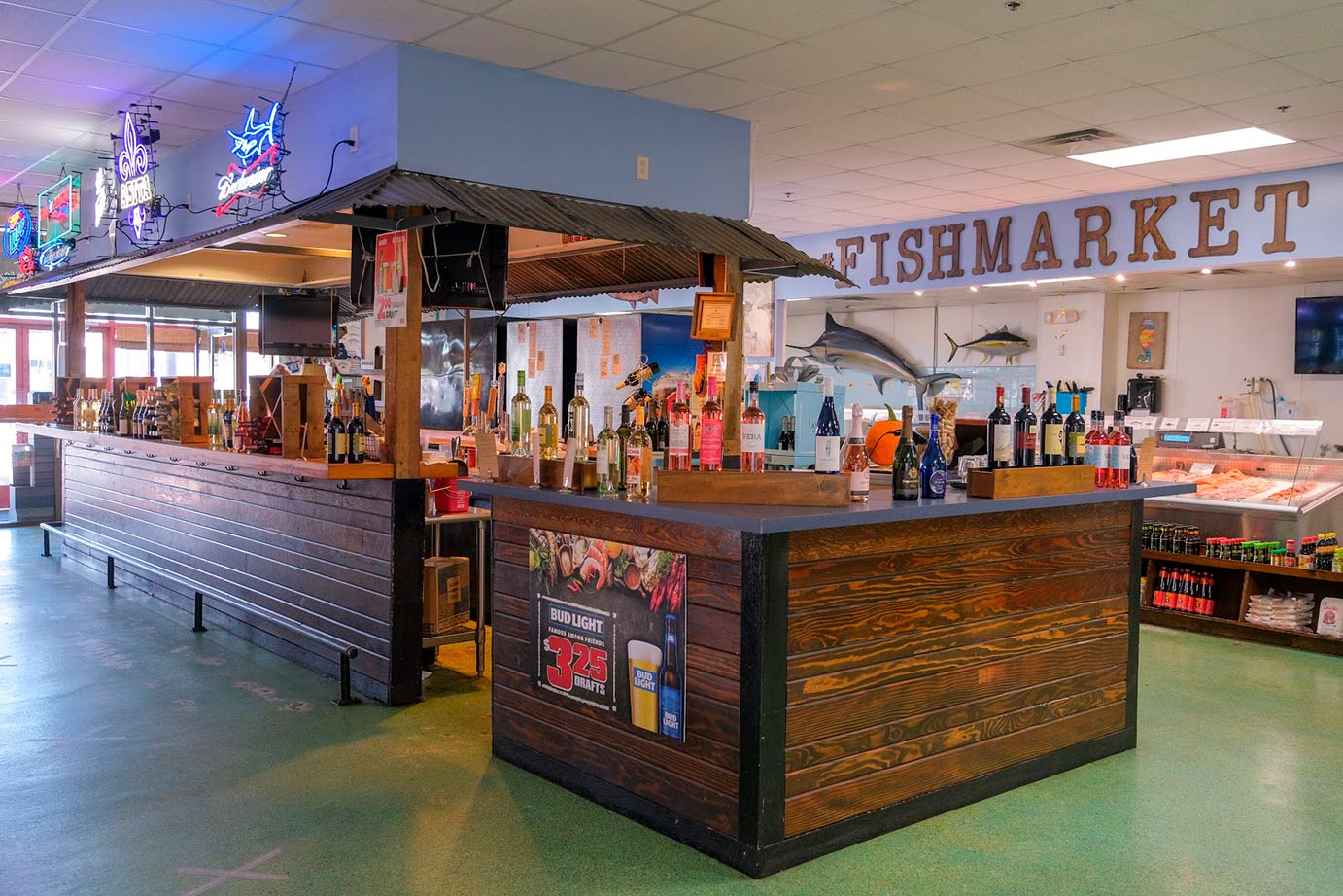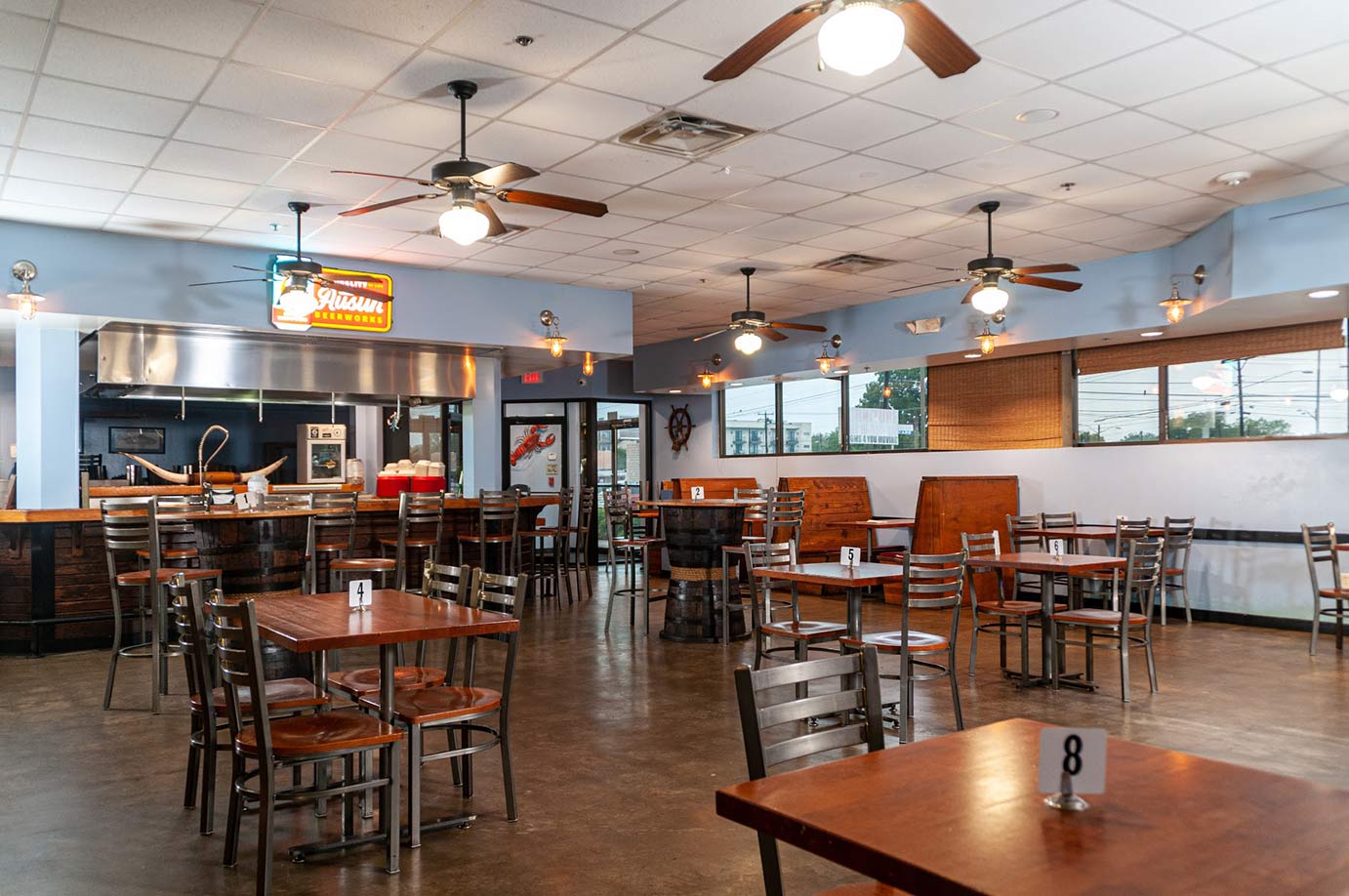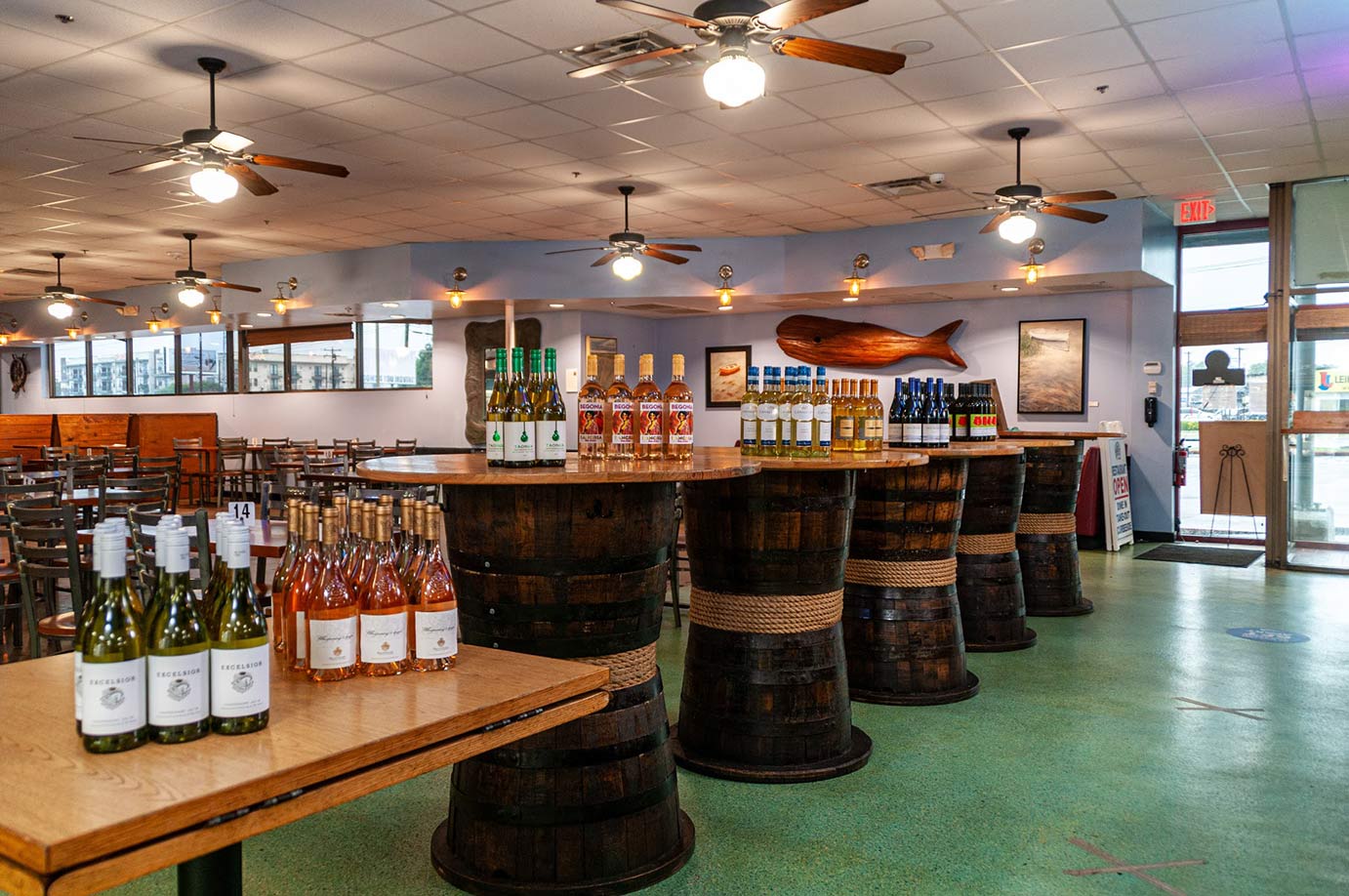Quality Seafood Market
About us
Since 1938
AN AUSTIN INSTITUTION since 1938, Quality Seafood Market’s origin was humble — a mere stall in Starr’s Fruit and Vegetable Market, located at 1005 Congress Avenue just across the street from the state Capitol. Garnett Lenz rented the space for his seafood stall from John Starr until moving his business to 3rd Street and Brazos Avenue near the Slaughter Locker Plant where he sold seafood and other gourmet food items, such as quail eggs and rattlesnake meat. The business later moved to San Jacinto Avenue between 18th and 19th Streets, and in 1950 finally settled at 409 East 19th Street (now MLK Jr. Blvd). At some point between his original seafood stall and the move to the East 19th Street location, Lenz sold half his business share to JD Spence, OT McCullough, and Jimmy Boutilier.
Lenz’s real passion was hauling seafood from the Texas coast to Austin, and the other owners were forced to sell when Lenz, the majority owner, wanted to revive his trucking business. Mr. Lenz eventually became the principal supplier of fresh seafood to Quality Seafood Market for several years to come. In the image at the top of this page, Garnet Lenz (far left) and John Starr (far right) are pictured at the market on 19th Street, circa 1950. Also pictured here: JD Spence, OT McCullough, “Shorty,” and “Benny.”
On June 30, 1958, Chester C. Husted, a frozen foods entrepreneur from Burnet, bought the business. JD Spence, OT McCullough, and Jimmy Boutilier formed a partnership with Mr. Husted and signed a contract for 30 months of business—all but Mr. Boutilier would remain in business with Mr. Husted for almost thirty years. Mr. Husted also owned a frozen food trucking company called Austin Frozen Foods. It was Tom Cantu, currently Quality Seafood Market’s longest standing employee, who worked as a driver for Austin Frozen Foods. Soon after Mr. Husted acquired the seafood market from Mr. Lenz, he merged his two businesses and Quality Seafood was born. In 1960, 20-year-old Tom Cantu transferred to Quality Seafood as a delivery driver for wholesale accounts. He then progressed up the ranks to fish cutter, and eventually, wholesale manager and chief buyer.
In 1965, Chester Husted was forced to move his business when the University of Texas claimed eminent domain. The site he chose, 2105 East Avenue (now I-35) was formerly home to a Checker Front grocery store. At this location, Mr. Husted installed the first kitchen at Quality Seafood. It was strictly a kitchen (not a restaurant) serving up to-go orders to hungry customers. In 1970, the University claimed eminent domain yet again (the building that Quality Seafood occupied space in would eventually become the site of the Texas Longhorns baseball stadium). Tired of moving his business, Mr. Husted searched for property further away from the University. He took advantage of the grand opening of the Highland Mall, which he was sure would bring new foot traffic to his market, and moved Quality Seafood to its present location at 5621 Airport Blvd. The building, with an interior designed by OT McCullough especially for Quality Seafood, accommodated Quality’s three-part business with space for a kitchen, a fresh seafood market, as well as coolers, freezers, and an office for the wholesale operation.
When Chester Husted passed away in 1982, Harris Husted and Jamie Akenhead inherited the business from their father. For a brief transition period, JD Spence and OT McCullough continued to manage the business as they had done under Mr. Husted. But when “Mac” (McCullough) and “Sonny” (Spence) decided to retire in 1983 and 1985 respectively, Jamie and Harris took over the day-to-day operations of the business. Jamie kept the books, while Harris focused on gaining new accounts for the market. In addition to his restaurant customers, Harris attempted to sign some larger accounts, such as the Army Air Force Exchange and the Bergstrom Air Force Base. But he was forced to cancel the accounts when too much red tape caused product spoilage and losses.
In the early 80s, the wholesale and retail business suffered due to a law passed by the Texas legislature banning the sale of redfish, black drum, and gulf trout caught by net. These local favorites didn’t make an industry comeback until the late 80s when Harris and Jamie were nearing retirement. But the brother-sister team kept the business afloat by carrying more frozen fish products and more “exotic” items that weren’t part of the local cuisine, such as ahi tuna. Harris and Jamie were also the first to install a dining room and turn the to-go kitchen into a sit-down restaurant, laying the foundation for owners to come.
In 1990, Harris and Jamie sold the business to Sam Eaves. Sam and his brother Dexter had previously owned their own seafood business – Eaves Brother’s Seafood. When Dexter went to law school, Sam purchased his brother’s share of the business and then proceeded to buy Quality Seafood. He changed the business name to Eaves Brothers Quality Seafoods. Sam Eaves’ skills as a salesman and his extensive experience in the Alaskan seafood industry, as well as fresh seafood’s increasing popularity among chefs and restaurant-goers, all combined to help expand Quality Seafood’s reach throughout the wholesale seafood market in Austin. For the first time, items like salmon, halibut, and sea bass could be found in the market case alongside local, seasonal favorites like Texas drum, shrimp, and oysters.
In 2003, Paul and Carol Huntsberger acquired the business and changed its name to Quality Seafood Market. Their passion for seafood and their years of experience in finance and sales, made them the perfect match for overseeing a number of expansions and improvements to the market, including interior and exterior renovations, additional restaurant seating, an expanded menu, a new oyster bar, and a catering business. In 2010 Carol became the sole owner, and the restaurant blossomed from a fried food kitchen into a place where families could gather to enjoy fresh, healthy preparations of seafood from waters as nearby as Texas and as far away as Alaska.


